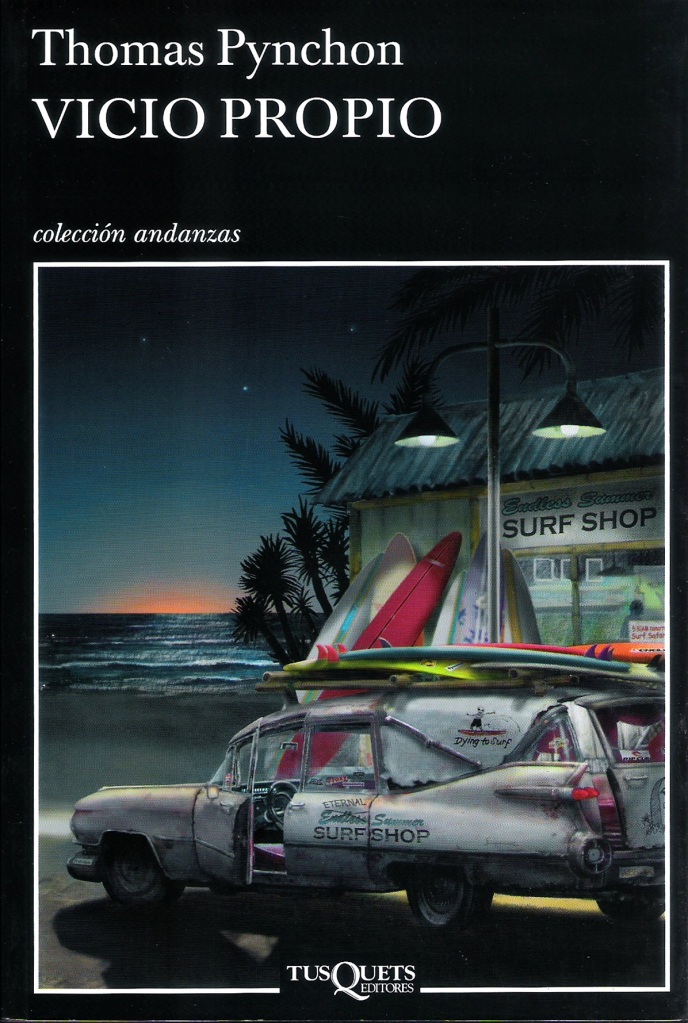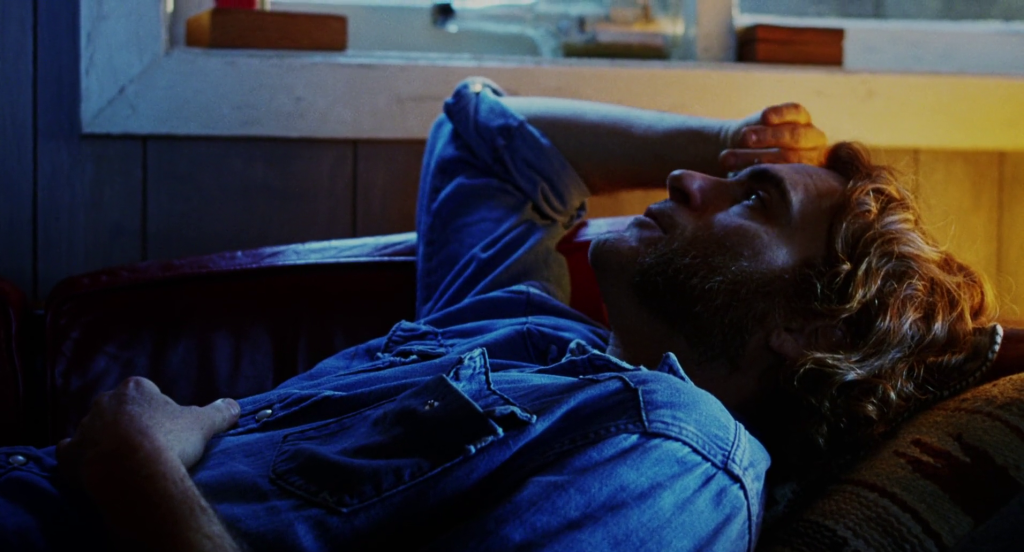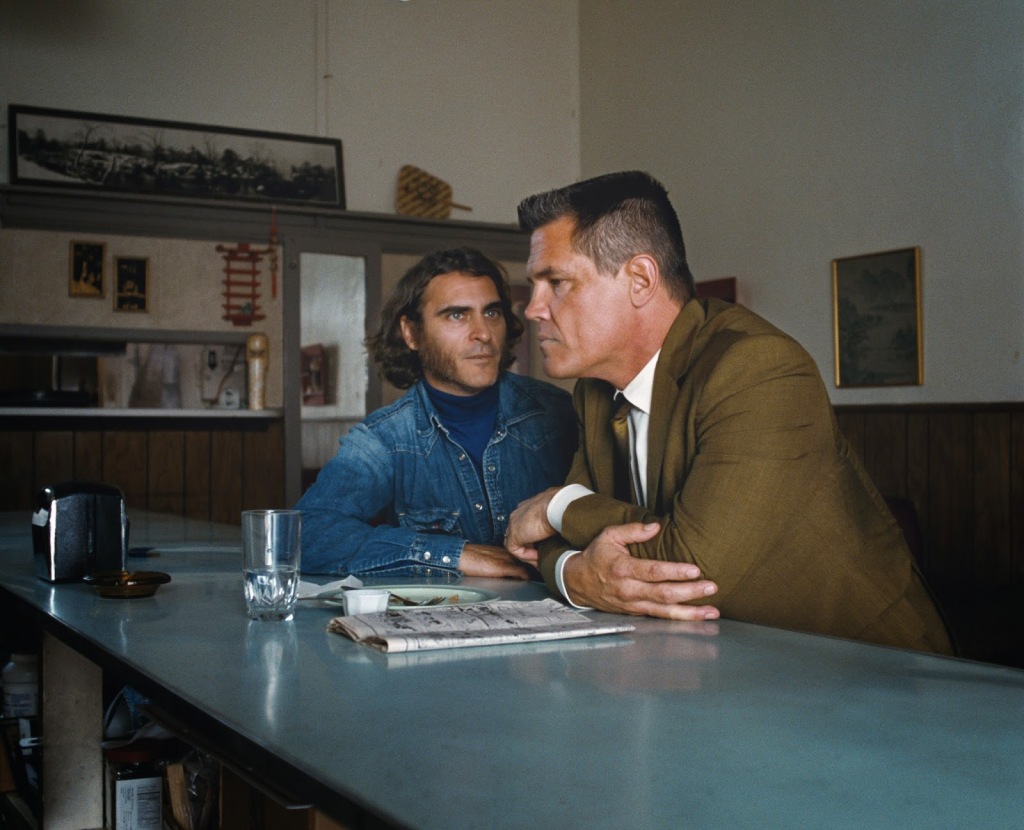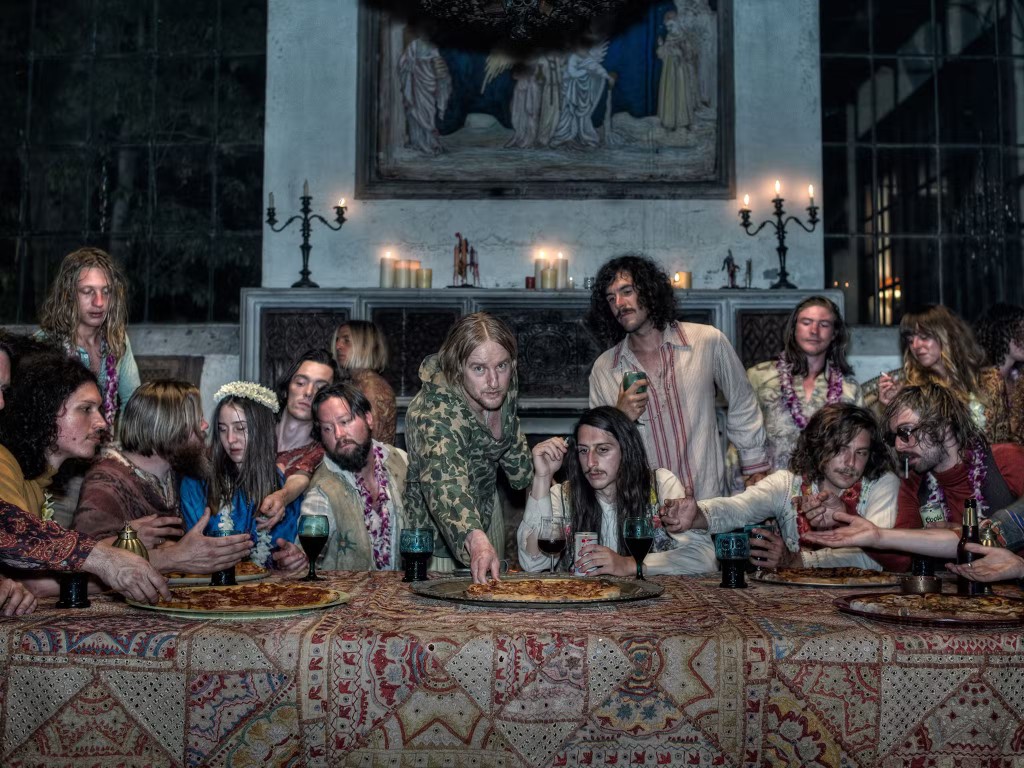 ith the city of Los Angeles as a backdrop, in the transition from the sixties to the seventies, Larry “Doc” Sportello works as a singular private detective, a marijuana addict and convinced of extrasensory powers, Divine Providence, the Laws of Karma, and other new age theories, in line with the hippie era. The visit to his office of Shasta Fay Hepworth, an ex-girlfriend, will start a convoluted police plot that, although contaminated by elements of satire and black humor, refers mainly to Raymond Chandler’s narrative, with certain reminiscences to James M. Cain.
ith the city of Los Angeles as a backdrop, in the transition from the sixties to the seventies, Larry “Doc” Sportello works as a singular private detective, a marijuana addict and convinced of extrasensory powers, Divine Providence, the Laws of Karma, and other new age theories, in line with the hippie era. The visit to his office of Shasta Fay Hepworth, an ex-girlfriend, will start a convoluted police plot that, although contaminated by elements of satire and black humor, refers mainly to Raymond Chandler’s narrative, with certain reminiscences to James M. Cain.
The initial situation is as follows: industry magnate Mickey Wolfmann, Shasta Fay Hepworth’s lover, has disappeared. It is likely that Sloane, Mickey Wolfmann’s wife, has something to do with this disappearance because, as far as Shasta Fay Hepworth knows, Sloane, together with Riggs Warbling, her lover, planned a sordid scheme to lock Mickey Wolfmann up in a psychiatric institution.
Larry Sportello asks his real estate aunt Reet to tell him what she knows about Mickey Wolfmann, who turns out to be little more than a thug, a feared and hated character, who is escorted by bikers belonging to a Nazi group known as the Aryan Brotherhood.

Larry Sportello’s office is introduced to a new character, Tariq Khalil, who is hoping for help in tracking down Glen Charlock, who allegedly owes him money. Although, at first, they don’t seem like related cases, it turns out that Glen Charlock is one of Mickey Wolfmann’s bodyguards.
The first plot twist occurs when, following a lead, Larry Sportello visits one of Mickey Wolfmann’s condos, unlucky enough to end up unconscious, probably from a blow received by an anonymous assailant, only to wake up to discover that Glen Charlock is dead and that Lieutenant Christian “Big Foot” Bjornsen, Larry Sportello’s old nemesis, considers him a suspect.
The case is complicated by the disappearance of Shasta herself, and a visit from Hope Harlingen, who claims that her husband Coy, presumed dead, is still alive, incognito; it turns out to be true. Coy is apparently being kept in hiding for security reasons, as he appears to have been hired by a mysterious political group to carry out acts of vandalism and sabotage.
Coy Harlingen informs Larry Sportello of a ship called the Golden Fang, allegedly engaged in illegal trafficking, that might have something to do with the case. It turns out that the Golden Fang is not just a ship, but also a rather sordid enterprise. Following that lead, Larry Sportello matches up with Japonica Fenway, whom he knows from the distant past, when he had to track her whereabouts under the commission of Crocker, her father. Japonica Fenway links Larry Sportello to the Chryskylodon Institute, a psychiatric institution possibly linked to drug trafficking.

One theory is that it is all part of a perverse and meticulously elaborated plan, in which the drug traffickers (through the Golden Fang) are in charge of the distribution and that they are also in charge of the institutions that give shelter to the addicts, through the Chryskylodon Institute. The capital and profits generated by drugs, their addiction and the recovery of addicts, are circumscribed to a closed circuit.
After being kidnapped, Larry Sportello will kill Puck Beaverton and Adrian Prussia, in self-defense. As a sort of epilogue, it is discovered that Crocker Fenway is one of the bigwigs of the company/institution/corruption network known as Golden Fang. A drug shipment belonging to them ends up in the hands of Larry Sportello, who decides to exchange it for filth for Coy Harlingen, for whom he feels responsible.
Third volume of the (unofficially) called “Californian Trilogy” -after The Crying of Lot 49 and Vineland-, the novel has a much simpler and more direct style than Pynchon’s classic cryptic and complex style is accustomed to, which gave him a reputation of “unreadable”, especially with his famous Gravity’s Rainbow, from 1973. In contrast to the latter, Inherent Vice reads almost like another best-seller, a detective novel with a lot of humor, cultural and historical references, and memorable characters.

The film opens with a shot of Gordita Beach and a voiceover that introduces the narration. The voice belongs to Sortilege, played by the interesting and quirky singer/songwriter Joanna Newsom. In the novel, Sortilege is just a former secretary, but in the film she has become the voice that articulates the story (tangential, but legitimate). The itinerary of episodes and characters corresponds to that of the novel with a high percentage of fidelity, despite the inevitable modifications and essential reductions.
Although the film lasts two and a half hours, it is actually surprising that Paul Thomas Anderson has managed to capture practically the entire novel, sparing only a few scenes and passages. For a novel so long and convoluted and overflowing with characters, managing to tell practically everything in two and a half hours is quite a feat. To wit, Thomas Pynchon was involved in writing the screenplay, which perhaps explains certain things.
Be that as it may, Paul Thomas Anderson achieved what seemed impossible: to adapt Thomas Pynchon without distorting his literary essence. When the film was released, it was both praised and booed, leaving no viewer indifferent. The epitome of atypical film was unanimous. In the light of a cross reading between film and book, what becomes evident is the complexity and narrative discontinuity of Thomas Pynchon, even when Inherent Vice (2009) is considered the most linear of his novels.

The film is cryptic and difficult to follow, but only because it transposes the novel with success. The paradoxical and curious thing is that the cryptic and convoluted plot does not ruin the pleasure of letting oneself flow with the images and atmospheres. In fact, the film has some frankly hypnotic scenes.
Joaquin Phoenix plays Larry “Doc” Sportello, while Katherine Waterson plays Shasta Fay Hepworth. Both are impeccable. A separate comment deserves Owen Wilson in the role of Coy Harlingen, as he manages to give a twist to the interpretation of the plot, from the special charisma that exudes his performance.
In the novel, it is never understood why Doc Sportello takes the resolution to help Coy Harlingen. One guesses a question of honor, which endows the detective with humanity (a deeply Chandlerian touch), but, at some point, it still seems exaggerated for Doc Sportello to gamble all or nothing for someone who is little more than a stranger.
A situation that, in the film, is convincing, thanks to Owen Wilson’s art, who imprints his character with that country, somewhat withdrawn, touching tone. He is a poor guy who has made a bad decision that has taken him away from his family and he is genuinely sorry. Impossible not to want to help him.

Something similar happens with Josh Brolin and detective Christian “Bigfoot” Bjornsen, although we have to wait until the final stretch of the film to see the actor expressing the character’s ambiguity in all its splendor. The characterization manages to give greater dimension to his literary counterpart.
A great detail emerges from the very beginning, when Shasta Fay Hepworth presents the case to Doc Sportello, alluding to a conspiratorial plot hatched by Sloane (Serena Scott Thomas) against her lover Michael Wolfmann (Eric Roberts): that mini-argument hides a movie that could have been and was not. A stereotyped but functional film, in the best tradition of the noir crime fiction forged under the shadow of James M. Cain.
Inherent Vice could have been that story of sentimental intrigue, with jealous lovers and greedy and betrayed wives, but it opts for something else, without losing awareness of the laws of its genre. It is an expression of freedom, perhaps of audacity. Paul Thomas Anderson seems to say (with the mask of Thomas Pynchon), that he controls and understands the genre from which he draws, but he prefers to subvert it, to unravel it. In reality, the film becomes impossible to categorize. One could say that it is experimental, only because it is difficult to relate it to others.
The soundtrack is great and the photography, by Robert Elswit, bets on dreaminess and artificiality, in line with the lysergic touches included. Each shot of the film expresses what could define it as a whole: the ambiguity that emerges from our questioned forecasts.
The film progresses by dint of accumulating scenes in which the axis and the viewer’s attention are forced to stop at a point that unravels at every step. That is why it is, from a narrative point of view, so difficult to follow: because its theme is elusive, intriguing, stimulating, but elusive.

The multiple elements that make up the film make it impossible to confirm what it is about. It is a crime movie, in the same way that it is also a romance, in the same way that it expresses a conflictive era in which the hippie dream is about to shatter, in the same way that it talks about a friendship or, strictly speaking, several friendships, which are sustained throughout the film (honorable mention to the lawyer Sauncho Smilax, of the always brilliant Benicio Del Toro, whose character is and is not the protagonist).
Everything is elusive in the film. Basically, an absolutely Pynchonean trait, where the meaning of each of the parts is not so important as the meaning that emerges from the whole, the specific texture generated by the peculiar combination and accumulation.
Many scenes are better understood by watching the film than by reading the book, and while it is true that there are many scenes in the book that are not in the film, it is also true that there is nothing in the film that is not in the book. Readers of Thomas Pynchon may appreciate it better, which is neither a virtue nor a flaw, but an irreducible fact. The kind of adaptations that work best under the complicity of the readers.
□ □ □ □ □ □ □